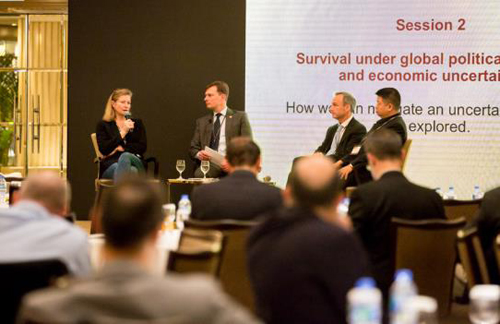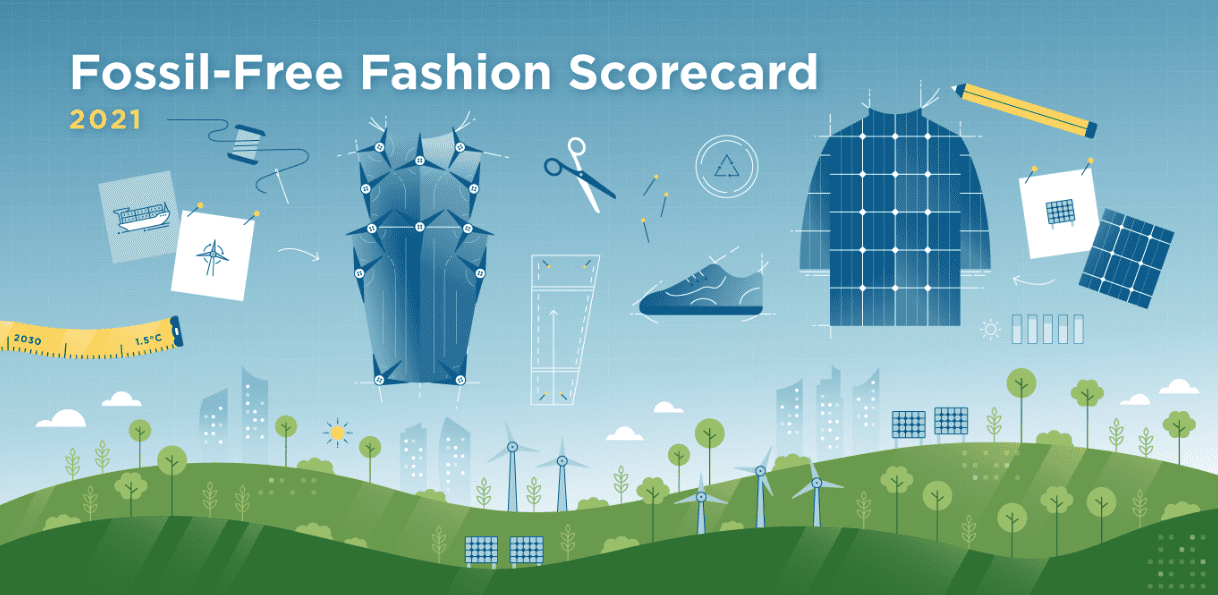Two broad themes dominated the discussions at the recent Prime Source Forum (PSF) held in Hong Kong (March 13-14, 2017), first, economic environment in 2017 given the uncertainties in new sourcing landscape, survival under global political frictions; second, getting ready to meet the demands of millennial consumers -- an individual who wants to ‘look now, buy now and wear now’ through digitisation, automation, and e-commerce. Around 300 senior executives from global fashion supply chain spread across 20 countries attended the two-day forum.
Two broad themes dominated the discussions at the recent Prime Source Forum (PSF) held in Hong Kong (March 13-14, 2017), first, economic environment in 2017 given the uncertainties in new sourcing landscape, survival under global political frictions; second, getting ready to meet the demands of millennial consumers -- an individual who wants to ‘look now, buy now and wear now’ through digitisation, automation, and e-commerce. Around 300 senior executives from global fashion supply chain spread across 20 countries attended the two-day forum.
The tone was set by Anson Bailey, Principal, Business Development, KPMG, Master of Ceremonies for PSF in his opening remark, “We live in interesting and challenging times.” This was followed by a welcome address by Hon Gregory So Kam-leung, Secretary for Commerce and Economic Development, Government of the Hong Kong Special Administrative Region. “Fashions change but change is always the fashion. Fashion is always evolving and continuously gives us new stimulants. To keep up with the fast pace of the fashion sector, one needs to think fast by anticipating, spotting and setting trends; act fast by repositioning for new markets, new strategies, and new mission; and stay fast by maintaining efficient supply chain management and keeping close to suppliers and customers,” said Leung.
Focus on Uncertainty
In his keynote address, Colin Browne, President, Global Sourcing of Under Armour, said the world in 2017 can be described through four overlapping themes: ‘Regionalisation’, ‘Made in America’, ‘Connected Consumer’ and ‘Corporate Responsibility.’ Describing each theme, he suggested politics are shifting away from Globalisation to ‘Regionalisation’, as counties become more protectionist. It is for the first time to move towards ‘Glocalisation’ where both onshore and offshore production should be balanced. The next theme follows on with ‘Made in America.’ New innovative production and materials allow some production to move back onshore. Browne indicated the need to consider total costs and value as opposed to just FOB costs. This will allow us to better service our consumers, which echoed with his third theme, ‘Connected Consumers.’

At the ‘CEO Dialogues’, Ben Simpfendorfer, Founder and CEO, Silk Road Associates, spoke on ‘The end of the global supply chain, as we know it!’ He pointed out global supply chain is experiencing new stress due to rising costs, political and anti-trade policies, complex and fragmented supply chains. China is losing market share in clothing and footwear but gaining share in electronics.
The following session centred around global trade and regulatory landscape. Yifan Hu, CIO Greater China and Chief China Economist, UBS, opined closer sourcing would have an impact on China because of rising costs, demand for fast fashion, more taxes and uncertainties. However, she said China is re-energised, improved on its technical side; hence it stands a good chance even in the new regulatory landscape. A session on survival under global political frictions and economic uncertainty, dealt on growing political upheavals across the world.
The later part of the day had an interesting session on Sourcing 2020, what does future fashion sourcing landscape hold? “Sourcing 2020 has to address Consumer in 2020, as manufacturing landscape is changing and moving,” remarked Anne-Laure Descours, Global Director, Development and Sourcing Apparel, Puma SE. The buzzwords would be collaboration, engagement, flexibility, adaptation and agility.
Moving ahead with technology, automation, data, digitalisation
Stuart Cranfield, Group Head of Supplier Working Conditions, C&J Clark International explained, “Sourcing in next five years, or by 2020, as it is too soon, will only have evolution and not revolution. Reengineer product and process, partnership approach is going to be more critical. We may not have changed fast but we have changed.” He outlined the trends impacting supply chain: faster speed to market, consumer wants to see now, buy now and wear now. There is a demand for broader assortments, smaller runs and personalisation. It is the era of reduced inventories where stores have become extensions of distribution centres. These are driven by technology-led innovation like connected wearables.
Next session on changes in fashion supply chain management and rising star of e-commerce decoded the expanse of e-commerce & m-commerce. Thibault Villet, Co-founder & CEO, Mei.com advised all CEOs engaged in China, in wake of online sales, since it will be almost half the sales in China and increasing social power of WeChat, they need to have strategic approach and goals, which partner to work with, recruit the right team- millennial and others and balance “We need to learn and mentor. We need to be open minded and collaborative with this millennial.” Villet advised adoption of omni-channel value chains and working closely with designers and platforms. Recruiting and empowering millenniums to drive change. In short, disrupt or be disrupted.
Moderated by Andreas Kim, MD, Greater China, Lectra, the session on ‘How to survive in the disruptive era and is technology the answer?’ focused on millennial, digitisation, big data and China. Kim said millennial will transform global economy. “We talked about millennial as consumer but these will also be part of workforce 2 billion millennials across the world and 435 million in China, 86 per cent of millennial in developing countries and 65 per cent of them in three countries viz. China 30 per cent, Brazil and India together 35 per cent make up total 65 per cent.”
On the topic China’s evolving economy will have global consequences and Made In China 2025, Janice Wang, CEO & Co-Founder, Alvanon said, “Cross-collaboration is needed to cover the skill gap, learning of industry paired with millennial and new technology bridging the gap. Training millennial about the process and then allowing them to think about disrupting the process, it is a combination of people and mindset.” The forum highlighted on how millennials will transform the global economy. Digitisation will force companies to reinvent themselves. Industry 4.0 will nurture new model.
Focus on Ethiopia, Africa
The second day began with a keynote address by Arkebe Oqubay, Minister and Special Advisor to the Prime Minister, the Federal Democratic Republic of Ethiopia. Speaking on why invest in Ethiopia he said, “Ethiopia has been recognised as the fastest growing country in Africa. GDP growth is 11 per cent for last 13 years. FDI has been flowing, primarily in manufacturing including from China. It employs active labour force of 50 million who are English speaking, and also produces 100,000 graduates every year. Proximity to the EU, US, Middle East and Asia and duty free access to the US and EU through AGOA and EBA, preferential duty treatment to markets such as China, India, Japan, Canada and Australia are added advantages.” Energy/electricity rate is one of the lowest in the world. It enjoys zero tax on exports and zero income tax for 10 years and free land.
Oqubay said, with 1.1 billionn population African countries need manufacturing sector. Jobs need to be created as for every direct job, two indirect jobs are created. “The three key elements needed for clear vision on apparel sector: first, work with closer partners, focus on productivity (skills development/labour intensive); second, availability of sound infrastructure/ample energy; third, learning – government is clear that we need to learn from private sector.”
World Fashion Design Competition honours

The 2nd World Fashion Design Competition (WFDA) was held concurrently, with 12th PSF, highlighted the collaboration amongst producers, designers and buying offices of multinational brands and e-tailers. Twelve finalists coming from mainland China, Hong Kong and Macau competed in five prizes. Leo Wong of iGift Co Macau won half of the prizes, including ‘Excellence in Innovation’ and ‘Excellence in Functionality’, and most importantly the ‘Overall Champion of the Competition’. Samuel Wong of Samuel Way Bespoke Shoecrafter also received the prize, ‘Excellence in Commercialisation’. The ‘Excellence in Aesthetic’ award went to Pang Ningning from the Beijing Institute of Fashion Technology on behalf of Toread. The beautiful world map on her ski jacket left very strong impression on judges. Pang’s representative received the prize from Bart De Meirsman, MD, QuikSilver.
“The goal of WFDA is very much aligned with the mission of Lectra which has been committed to training future professionals in design and product development. Lectra provides tools to, shares best practices and expertise with 850+ schools and universities around the world to train their students, which offers students a great opportunity to learn to take a greater control over processes and at the same time add value to their creativity,” said Andreas Kim, MD, Lectra Greater China, which was the exclusive sponsor of this year’s WFDA. The next PSF and WFDA Award Ceremony are scheduled in Hong Kong again in Spring 2018.














